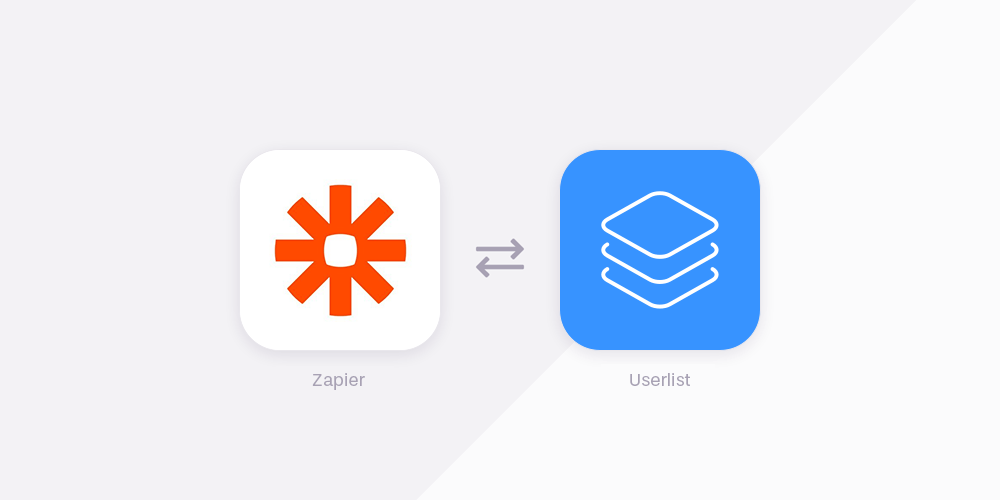Wondering if users get value from your product? Looking for a way to measure user engagement?
The more engaged your users are, the more value they get from your product, the more likely they are to continue using it and bringing revenue.
But engagement can be a tricky concept to grasp, especially if you’ve never calculated the user engagement score before.
In this guide, you will learn:
- What user engagement is
- Why it’s important for your SaaS business
- How to calculate it for your product
What is user engagement?
User engagement refers to a set of success metrics that measure how actively the user is engaged with a product and whether they are getting value from it.
But note that we said “a set of metrics.” That’s because we don’t measure user engagement by observing one thing. Depending on the nature of your product, the score will be based on various metrics and actions like the number of sessions in a given time period, using a specific feature, clicks, and so on.
For some products, success means that the user will be engaging with the tool every day — imagine a time tracking app that measures productivity.
For other products, users don’t need to engage that often to get good value from it. Take analytics platforms, for example. As a user, you review them occasionally. And even here, you’d log into some tools more than others.
Other times, users rarely use the product because it’s a “set and forget” type of software. But this doesn’t mean that they don’t engage with it — quite the contrary.
Email automation is a great example here. The whole idea is to automate actions users don’t want to perform repeatedly. So it’s hard to expect a user to actively work within the app all the time.
The best example is a downtime reporting tool for websites. That’s the one tool you set up and never go back to again. In fact, the whole idea here is that you don’t want to be engaging with it regularly. Why? Because if you do, then it means that something went wrong with the site, and the tool has notified you about it.
So the big challenge with user engagement is that you measure it differently for different products.
Let us illustrate that with a quick example.
An example of user engagement in SaaS
Let’s imagine that you run a photo editing app called Sparkle. Your product allows users to store their photos, do some basic manipulation, and export the results elsewhere.
To evaluate their engagement, you need to identify what it means for a person to actively use your product and monitor whether they regularly increase that aspect of their usage.
Your users would be uploading images and organizing them in albums. You could say that uploading photos signifies engagement. Therefore, you’d consider a user who regularly uploads files and even creates albums an engaged customer. And you’d use that as the basis for developing your user engagement metrics:
- photos_uploaded
- albums_created
For other examples, see our SaaS messaging blueprints. This guide features three different business blueprints with metrics to track.
Why does user engagement mean so much in SaaS?
The simplest answer is that user engagement is closely tied to the value users receive from your tool.
Low user engagement would suggest that users don’t see your product as valuable and would eventually churn.
On the other hand, high user engagement usually means that the user is actively receiving value from your tool. They are also highly likely to recommend your product to others, upgrade to a higher price plan, and overall help in boosting your growth.
That’s why tracking and improving user engagement is one of the primary activities for SaaS companies, product managers, and customer success managers.
But there are other smaller ways in which the user engagement score can help boost your business.
For example, you could use it to evaluate engagement levels with specific features. Even knowing which functionality customers use the most could help you prioritize the product roadmap.
Similarly, such data could also reveal a lot about your user experience and tell you which areas of the app attract the user’s attention the most.
So how do you get to that data?
How to calculate user engagement
We’ve already established that user engagement metrics will differ between businesses. This means that it’s almost impossible to define a single, universal customer engagement score metric.
Having said that, we can point you to different actions and events that could signal engagement in your SaaS.
For example:
- Usage levels — monitor how often users log in and actively use the product. Depending on the type of product you run, the metric might measure engagement daily, weekly, hourly, and so on and would work best for products that customers need to use relatively often to get value from.
- Session length — track how long users actively use the product per session. Again, this type of engagement will differ significantly between products, and so you need to decide what the optimum session length would be specifically for your tool.
- Engagement events — these activities suggest that a person uses the app actively beyond just logging in. For example, for a small business accounting app, the engagement events would be creating invoices or collecting online payments from customers.
- The volume of content (or other user-generated data) in the product — this metric would focus on how much work the user has done inside the product. For example, for a productivity app, it could be the number of projects being managed. For a text editor, a number of created documents, etc.
- The volume of value produced — these are actions that help you measure the output of the software that’s tied to value. For example, for email automation software, the metric could be the number of messages sent from the platform. For a CRM tool, it could be the number of users in the database. Survey platforms could monitor how many projects their users run at a time, and so on.
- The number of outcomes — you could also measure third-party behavior that reflects the value. For instance, if you run referral software, you could measure the total number of referrals happening through the platform.
Sidenote. You don’t need to track many events to calculate user engagement.
The photo editing tool from our example above could track just a handful of events and you will still know how engaged its users are. They could track uploading photos, organize them in albums, and perhaps also export edited images elsewhere.
The key to measuring user engagement isn’t to have a whole variety of data. It’s to monitor one or two high-level actions that signify how much value a person’s receiving from the app.
How to improve user engagement
Regardless of how much users enjoy your product, there’s always room for improvement. We listed some ideas for increasing user engagement.
#1. Measure engagement at the beginning
It sounds obvious. Then again, many SaaS founders only have a vague idea about how well their products are engaging customers. They’d immediately jump into trying to improve it without having any deeper understanding of what’s going on.
They’d have no benchmarks to evaluate their success rate. No data to highlight gaps in engagement and no insights that would allow them to launch any meaningful communication strategy to remind customers that their product exists.
Don’t make the same mistake. Measure and analyze your engagement first. Identify what aspects of the product might leave customers cold, and build a plan to turn the situation around.
#2. Make a solid first impression with the product
It’s fair to assume that anybody signing up for your free trial or the free account hasn’t seen the product before. It means that those people aren’t familiar with the intricacies of your interface. What’s more, those people might not have any previous experience to set up products like yours.
But that’s an opportunity for you to ensure that they understand it and realize the value of your app right away.
Here are some ideas on how to do that:
- First, create an incredible user onboarding experience.
- Explain the interface to any first-time user with tooltips, in-app notifications, and more.
- Guide users to the activation point. Use tutorials and similar strategies to ensure that customers reach the activation event as soon as possible.
#3. Market advanced features to more experienced users
It’s easy to assume that people who’ve been using your product for a long time know everything about it. Some of them do, of course. But I’m sure that you have many experienced users who never even tried some more advanced features.
The thing is: those advanced features can deliver additional value to them and strengthen their engagement. First, conduct a proper features, advantages and benefits analysis to understand what you should highlight to your users. You can then use in-app notifications or send emails to help existing customers discover and try out your advanced features.
#4. Always announce new features in the product
Most commonly, we send users emails about new features. That’s a great way to do it but it also has one limitation.
You see, email presents those features out of context. Your message tells users about it and maybe even shows some visuals illustrating the feature. But the user isn’t in the app to try and experience it right away. What’s more, they might not be planning to log in for some time, and by the time they did, that feature announcement might be a thing of the past.
But we’re not telling you to stop emailing users about new features. Instead, compliment the email message with an in-app announcement.
This way, users will not only learn about the feature but they’ll also be able to click and see it immediately.
#5. Educate users about the best ways to use your product
Another great strategy to help users reach the activation point is to educate them about the best ways to use your product.
Often, customers start using the app to achieve a particular objective. But they might not have enough expertise or experience to achieve immediate success or they don’t realize that your product could help them reach other goals.
That’s where product-led content comes into play. Articles, walkthrough videos, how-to guides and courses, tutorials, use cases, and more help customers learn how to achieve success with your product. In turn, that success will naturally lead to a much higher engagement.
#6. Offer high-touch help to customers
Sometimes, customers need more than a self-help option. Product-led content might be a great start for them. However, those people might also need you to help them get more out of your product.
That’s where customer success comes in. You could offer customers an option to book a time with your customer success manager (automatically, through a calendar link in a behavior-based campaign, for example) or have the manager identify such potential customers and reach out directly.
Looking to boost user engagement for your SaaS? See how you could do it easily with behavior-based email automation in Userlist.
Don’t wait for the muse. Apply this step-by-step method to write high-performing email campaigns in hours, not weeks.





